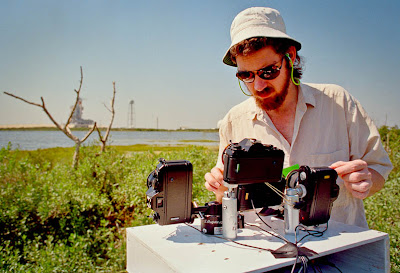From about three miles away at the KSC media center, the ground shook like a California quake and the roar was, well, a ROAR as the orbiter lifted off for it's mission. Perhaps it was the anticipation. Perhaps it was the afternoon edition deadline pressure. Perhaps it was a lifetime of being interested in space. Whatever it was, it was pretty darned cool.
I have had the thrill of photographing three space shuttle launches, STS-26, STS-29 and STS-31. Oddly enough, all were flown by the Shuttle Discovery. I guess it is fitting since Discovery flew more missions, carried more crew, spent more time in space and circled the Earth more than any other orbiter. It also led the Return to Space twice.
Discovery - Images by Dave Einsel
Most of the really cool launch pictures are made from unmanned positions. Thanks to my friend and remote guru Scott Andrews, that was not a problem.
Scott, a Nikon rep at the time who has since moved to Canon, supplied the N2000 bodies we used as remote cameras back in the film days. It was the perfect camera because it was small and had a slow built-in motor drive. Since we were shooting with 36-exposure rolls of film, there was a danger of the whole roll being exposed with the shuttle sitting on the pad. Scott, a brainiac from VA Tech, designed a triggering device that uses a geo-phone to sense vibration and has an adjustable delay. Without it, it would have been a total crap shoot.
KSC is not only launch central, it is a wildlife preserve. You always have to keep that in mind when tromping through the brush in search of the perfect angle. This Eastern Diamondback was curious but accommodating.
If all goes as scheduled, the Shuttle program will reach the end of the road with the launch of STS-135 this week. The program has given us thirty wonderful years of incredible highs and, sadly, devastating lows. Watching Atlantis disappear into the big blue beyond will certainly rekindle fond memories of my experiences and the great people I got to work with at the Cape.









0 comments:
Post a Comment